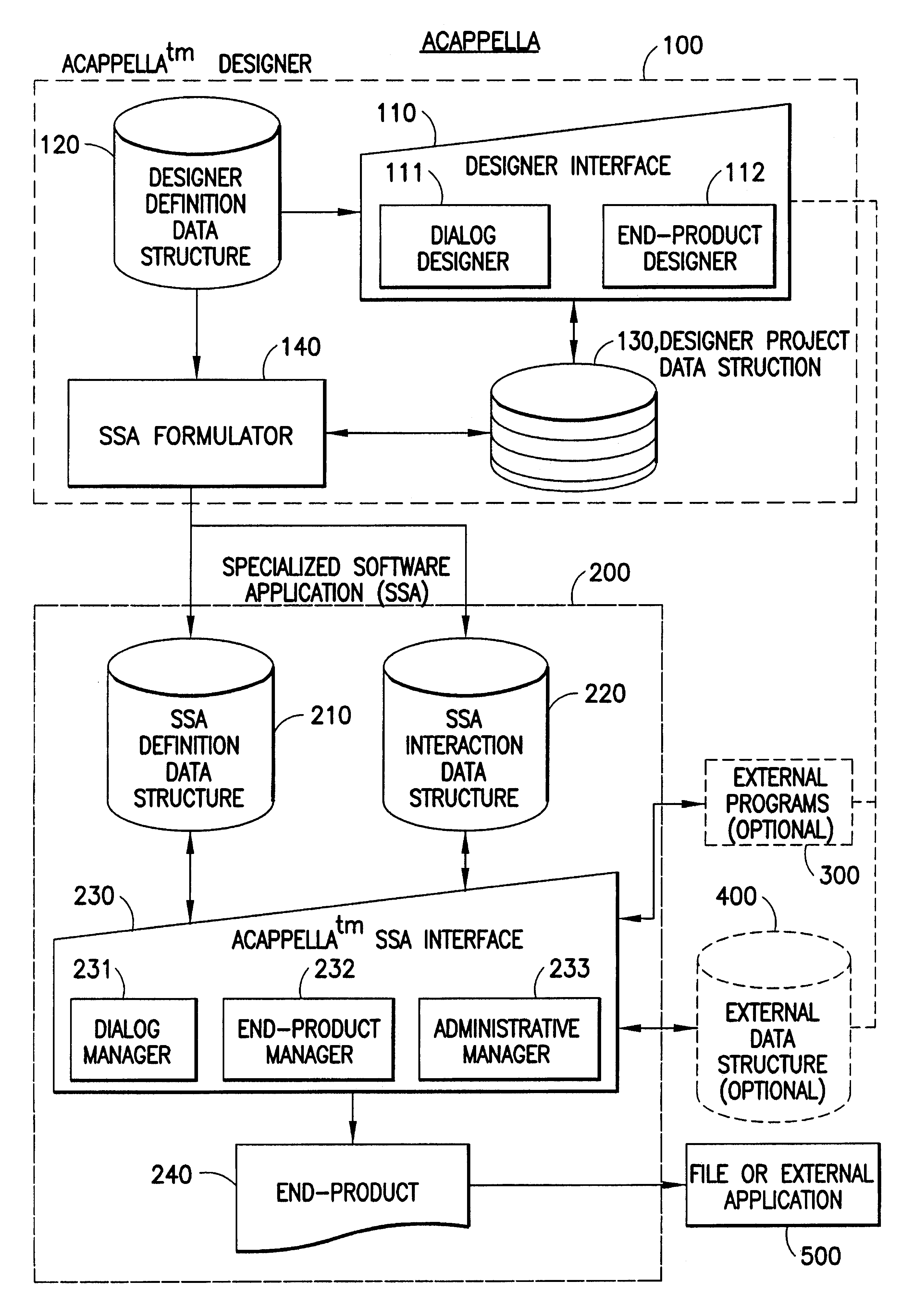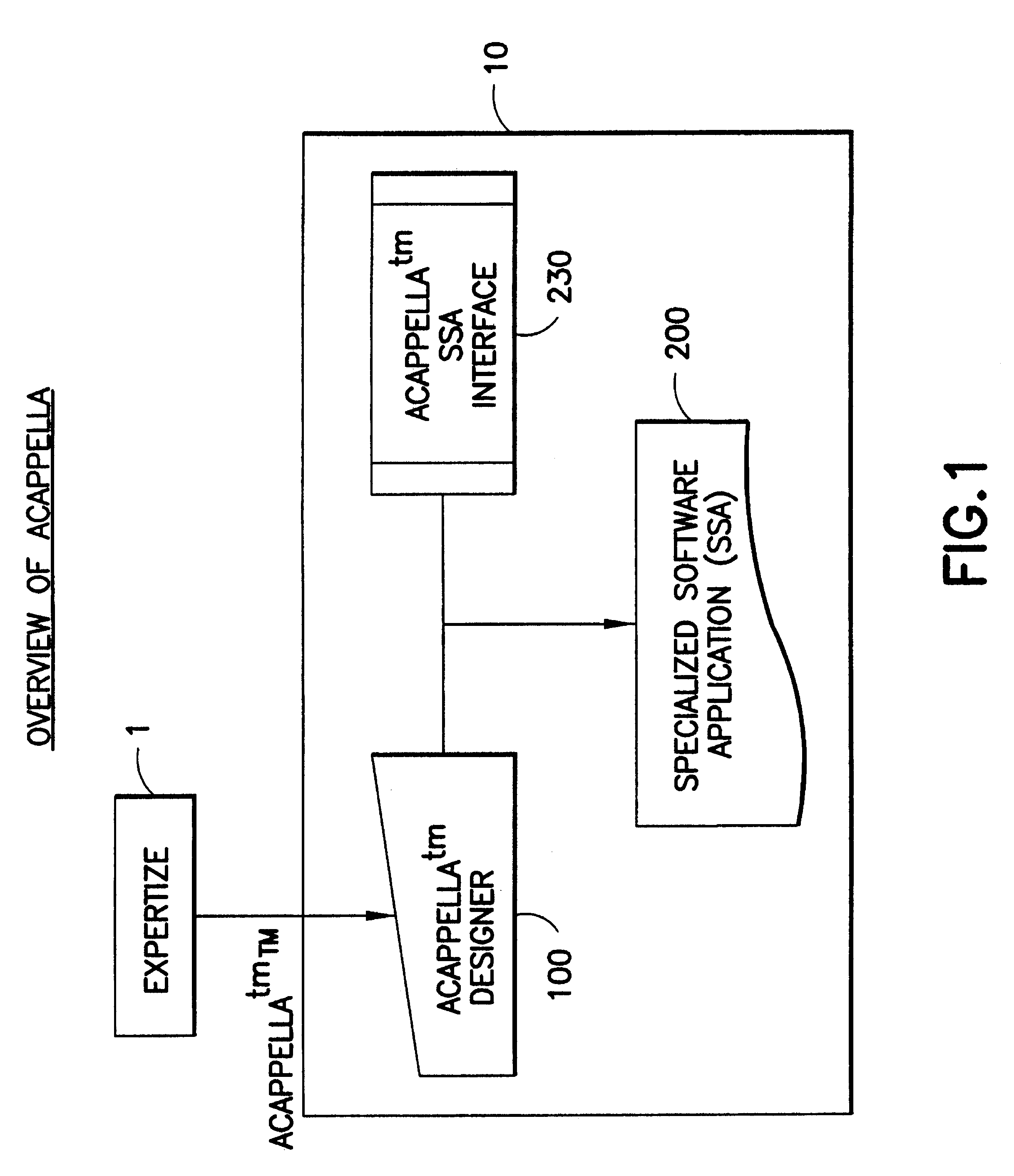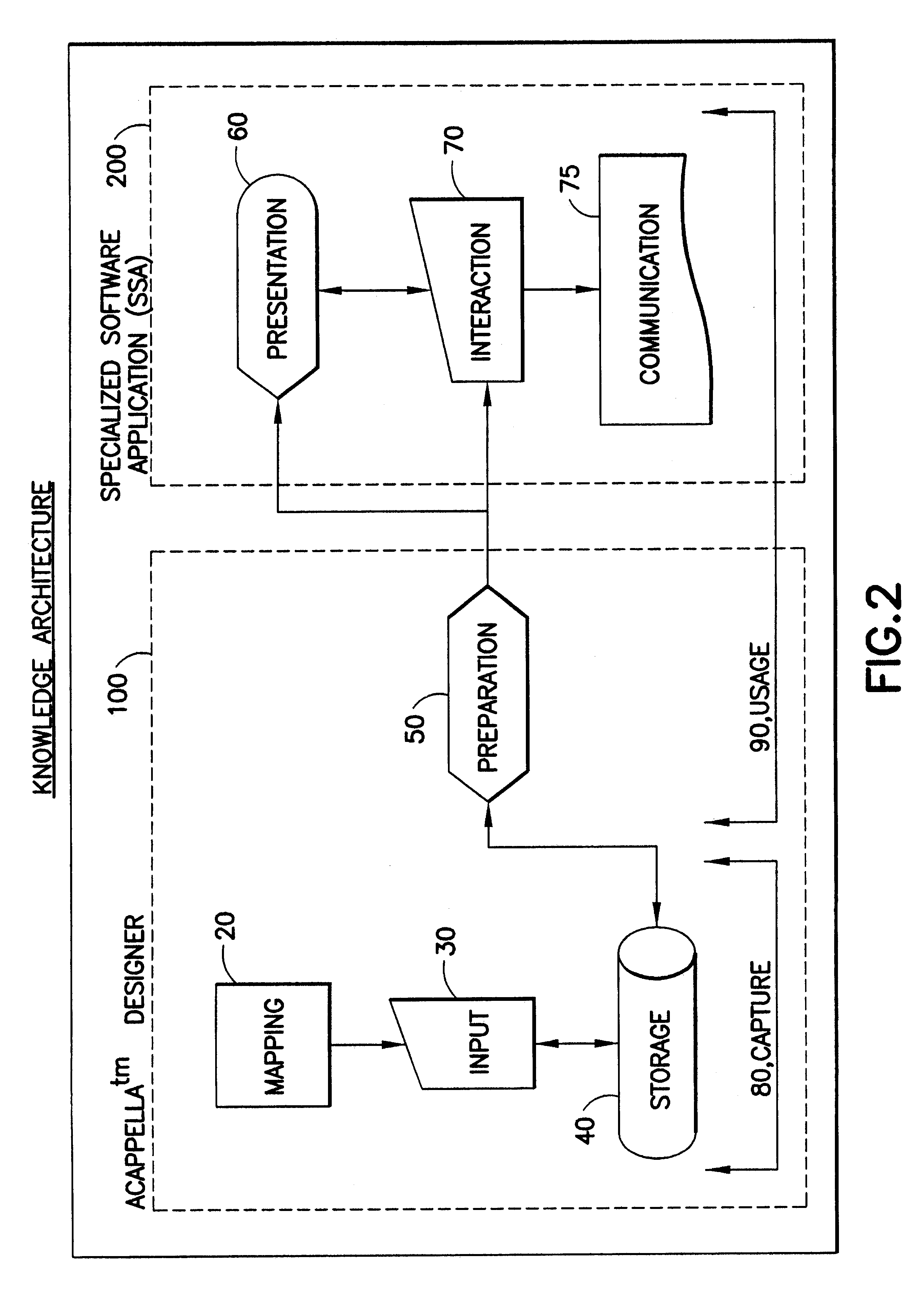A more complete understanding of the present invention and advantages thereof may be acquired upon consideration of the following detailed description of the invention when considered in connection with the accompanying drawings, in which like reference numerals indicate like features throughout the features thereof, and wherein;
FIG. 1 is a flow diagram representing a broad overview of Acappella components according to the
system and method of the invention;
FIG. 2 is a flow diagram representing a broad overview of Knowledge Architecture and the method of the invention;
FIG. 3 is a flow diagram representing a detailed description of the creation of a specialized software application according to the
system and method of the invention;
FIG. 4 is a flow diagram representing a detailed description of the creation or modification of a specialized software application according to the system and method of the invention;
FIG. 5 is a flow diagram representing the process of building a specialized software application according to the system and method of the invention;
FIG. 6 is a flow diagram describing the process of adding a container to a specialized software application according to the system and method of the invention;
FIG. 7 is a flow diagram describing the process of modifying a container within a specialized software application according to the system and method of the invention;
FIG. 8 is a flow diagram representing the method of utilizing the dialog designer (111) according to the system and method of the invention;
FIG. 9 is a flow diagram representing the method of utilizing the end-product designer (112) according to the system and method of the invention;
FIG. 10 is a flow diagram representing the
project management component of the acappella designer according to the system and method of the invention;
FIG. 11 is a flow diagram representing the method of analyzing, reviewing, and modifying the end-
product design according to the system and method of the invention;
FIG. 12 is a diagram representing the method used to formulate a specialized software application based on the dialogs and end-products according to the system and method of the invention;
FIG. 13 is a flow diagram representing the formulating of a dialog according to the system and method of the invention;
FIG. 14 is a flow diagram representing the formulating of an end-product according to the system and method of the invention;
FIG. 15 is a flow diagram representing the use of a specialized software application according to the system and method of the invention;
FIG. 16 is a flow diagram representing the assessment selection component of the
dialog manager according to the system and method of the invention;
FIG. 17 is a flow diagram representing the content interaction component of the
dialog manager according to the system and method of the invention;
FIG. 18 is a flow diagram representing the topic
initiation sequence in the content interaction component of the
dialog manager according to the system and method of the invention;
FIG. 19 is a flow diagram representing the topic closure sequence in the content interaction component of the dialog manager according to the system and method of the invention;
FIG. 20 is a flow diagram representing the process of producing the end-product according to the system and method of the invention;
FIG. 21 is a flow diagram representing the end-product generation component according to the system and method of the invention;
A more complete understanding of the present invention and advantages thereof may be acquired upon consideration of the following detailed description of the invention when considered in connection with the accompanying drawings, in which like reference numerals indicate like features throughout the features thereof, and wherein;
The invention may in one aspect be described with reference to FIG. 1 with respect to an overview of the present invention, Knowledge Architecture and Acappella. The purpose of the present invention is to capture the skill, experience, understandings, wisdom, and know-how that defines the
specialized knowledge that an expert brings when assessing, evaluating, reviewing, diagnosing, investigating, or analyzing a particular manner of situation, event, circumstance, or process. This captured knowledge is then converted into a Specialized
Software Application (SSA), which is a standalone
personal computer, networkable, or
Internet based software application. Until the knowledge has been captured and converted into an SSA, the knowledge has remained hidden and
usable only at the disposal of the expert. Once it is converted into an SSA, that knowledge can be made available to and accessible by anyone who has access to the SSA.
 Login to View More
Login to View More  Login to View More
Login to View More 


